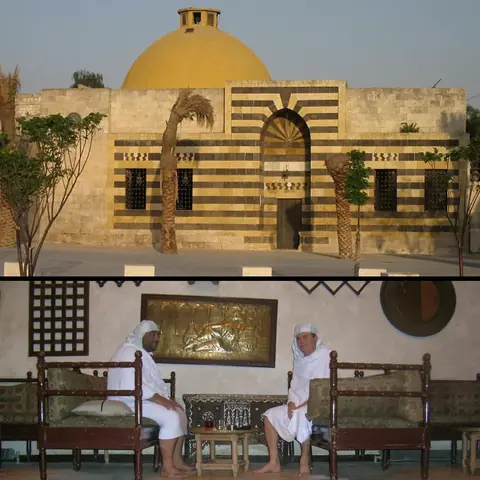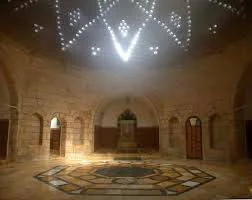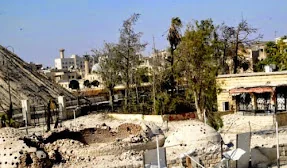My troubles trace back to a Zār ceremony I attended when I was just six years old, a ritual whose true purpose and dangers I was too young and naive to understand.
Over the following years, however, the devastating consequences became painfully clear.
In the heart of Old Aleppo, Syria on the eastern slope of its ancient Citadel, stands the legendary Yalbugha Al-Nasiri Bathhouse.
But this is no ordinary relic of a bygone era. Here, the scent of centuries mingles with the whispered tales of unseen entities. This bathhouse is a gateway not just to the history of sultans and warriors, but to the mysterious world of spirits and djinn, hidden in the steamy shadows.
A Legacy from the Mamluk Era
The Yalbugha Al-Nasiri Bathhouse was built near the Citadel's main gate during the rule of King Yalbugha Al-Nasiri, who served as the Mamluk viceroy of Syria in the late 13th and early 14th centuries.
The renowned historian Ibn al-Khatib praised Yalbugha's bathhouses in his book " The Selected Pearl," stating:
"There is nothing in the kingdom to rival them."
Originally connected to the Citadel through underground passages (one of which was later destroyed during restoration), the bathhouse is believed to have been constructed around 1365 CE. It was severely damaged when the Mongol conqueror Tamerlane captured Aleppo in 1400, but was subsequently restored by Prince Yalbugha, whose name it still bears.
Aleppo: Once the City of a Thousand Bathhouses
At its height, Aleppo boasted over 400 public bathhouses both within and outside its ancient walls — vibrant social hubs where people cleansed, gathered, and exchanged stories.
Today, fewer than 40 traditional hammams survive, and Yalbugha Al-Nasiri remains among the finest examples, a silent witness to the grandeur of medieval Aleppo.
Haunted Hammams and the Spirits Within
Bathhouses in the Middle East have long been surrounded by a mystical aura. In Islamic and Arab folklore, djinn, supernatural beings created from smokeless fire are believed to favor places like abandoned homes, dark alleys, and... humid, enclosed spaces such as bathhouses.The famous Ayyubid-era historian Ibn Shaddad documented many of Aleppo’s hammams in his work "The Critical Connection in the Mention of the Princes of Syria and Jazira," noting their locations and significance.
But Yalbugha Bathhouse holds a special place among these, with its own chilling legend:
the story of a bride kidnapped by djinn the night before her wedding.
According to local caretakers, it is commonly believed that all hammams are "inhabited", their secluded, shadowy atmospheres making them perfect dwellings for spirits.
Stories abound of unsuspecting bathers who, upon closer inspection, realized that the other bathers were not human , their cloven, animal-like feet betraying their true nature.
Thus, a peculiar tradition arose: before entering a hammam, people would check the feet of others while quietly reciting protective prayers to ward off malevolent entities.
The legend of the kidnapped bride likely dates back about 70 years, a time when public bathhouses were essential to daily life. Some suggest it may have been an embellished story, perhaps even fueled by competition among bathhouse owners seeking to attract or frighten customers.
Yet, in a culture where the unseen world intertwines with daily reality, such tales are rarely dismissed outright.
A Heritage Scarred by War
Tragically, much of Yalbugha Al-Nasiri Bathhouse was devastated during the recent years of conflict, along with many other treasures of Old Aleppo.Today, what remains of the bathhouse stands like a silent monument not just to the city's medieval splendor, but to the invisible world of spirits and legends that once echoed within its steamy chambers.









No comments:
Post a Comment